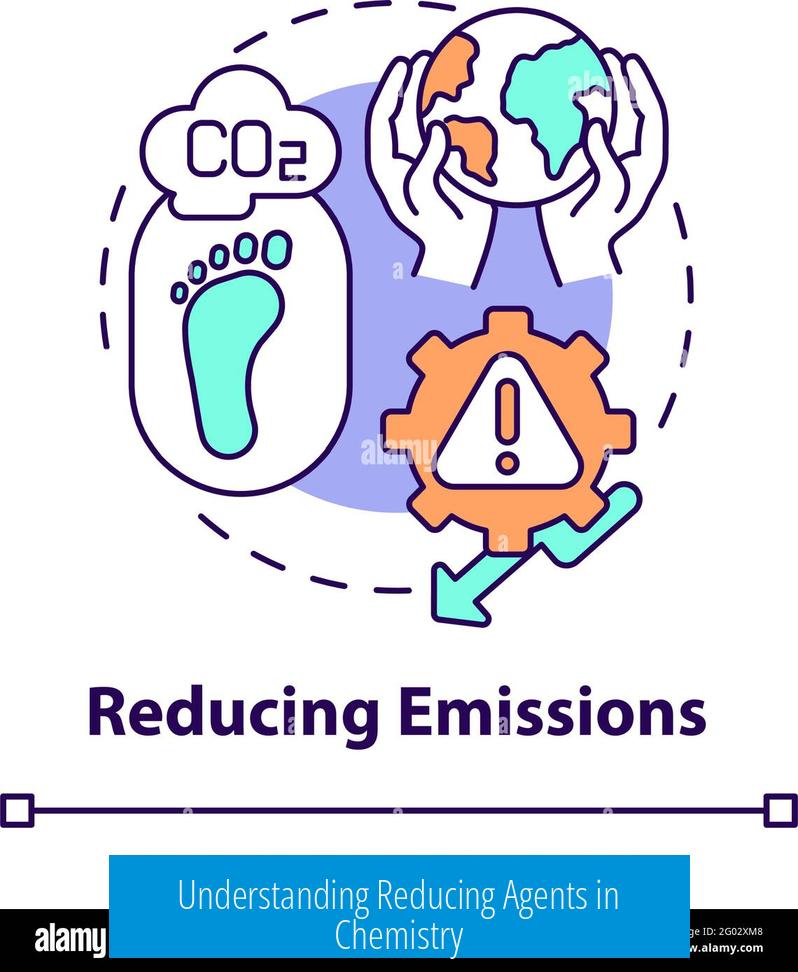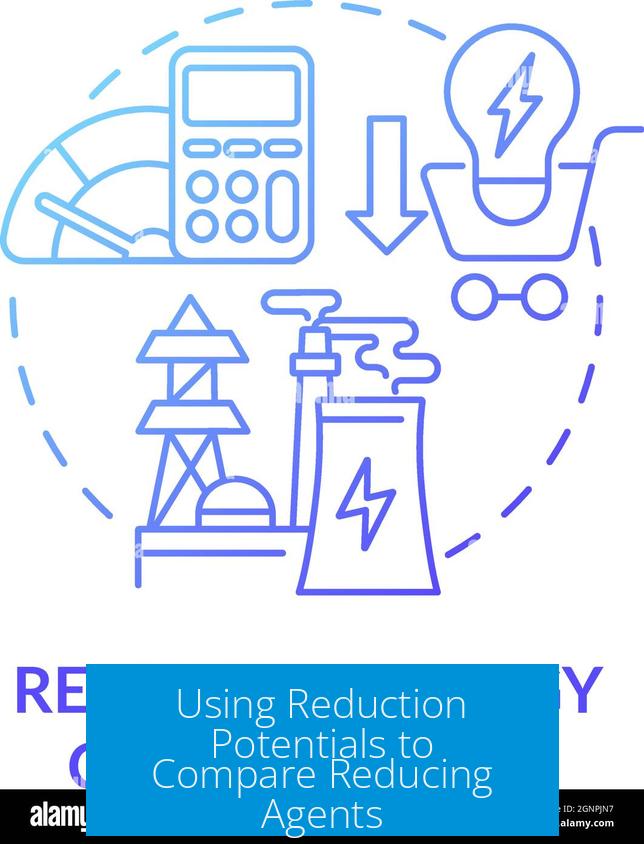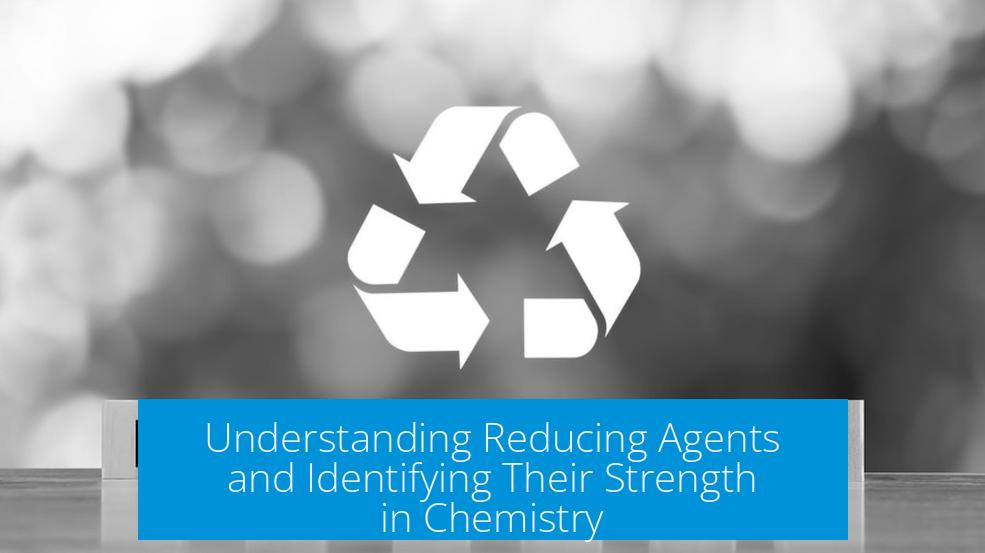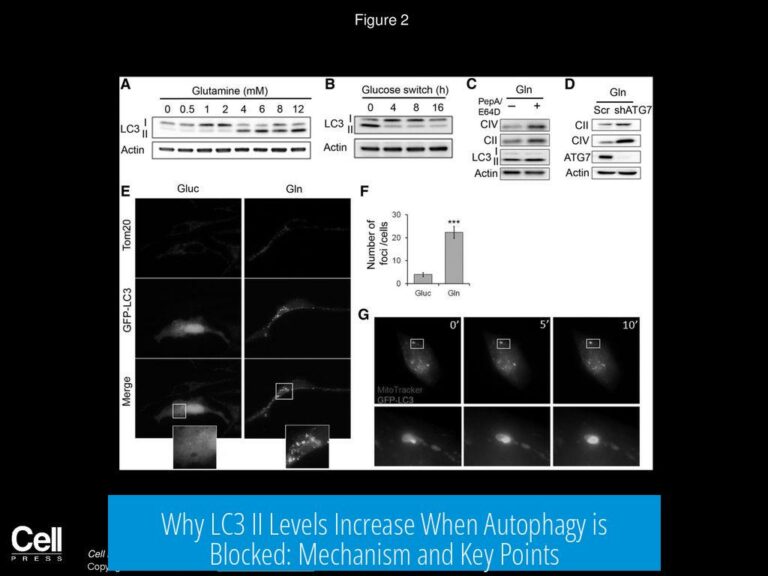Understanding Reducing Agents in Chemistry

A reducing agent is a substance that donates electrons to another, causing the latter to be reduced. This agent itself undergoes oxidation in the process. In redox reactions, reducing agents play a crucial role by providing electrons.
What Defines a Reducing Agent?
Reducing agents lose electrons during a chemical reaction. By giving away electrons, they help another substance gain electrons, i.e., get reduced. This electron transfer is the core function of a reducing agent.
Determining the Strength of a Reducing Agent

The strength of a reducing agent depends on how readily it donates electrons. This property correlates directly with its reduction potential.
- Reduction potential measures a species’ tendency to gain electrons.
- A lower (more negative) reduction potential means the species favors losing electrons.
- Thus, a reducing agent with a more negative standard electrode potential is stronger.
For example, substances at the top of standard electrode potential tables (with highly negative values) are the strongest reducing agents. These include elements like lithium, potassium, and calcium.
Key Characteristics of Strong Reducing Agents
- They have large negative standard reduction potentials.
- They oxidize very easily, donating electrons quickly.
- Common strong reducing agents are active metals and hydride donors.
Their ease of oxidation makes them efficient at driving redox reactions.
Using Reduction Potentials to Compare Reducing Agents

Reduction potentials are tabulated under standard conditions (25°C, 1 M concentration). Comparing these potentials reveals which agents are stronger. For example, sodium’s reduction potential is about -2.71 V, indicating it readily gives up electrons and acts as a strong reducing agent.
One must consult standard electrode potential charts to accurately assess reducing agent strength. These charts rank agents by their ability to donate electrons.
Summary of Key Points
- A reducing agent donates electrons, itself becoming oxidized.
- Strength depends on reduction potential; more negative means stronger.
- Strong reducing agents oxidize easily and have highly negative reduction potentials.
- Standard electrode potential tables help identify strong reducing agents.
What Exactly Is a Reducing Agent and How Do You Determine Which Reducing Agent Is Strong?

A reducing agent is a substance that donates electrons to another compound, causing that compound to be reduced. In plain English? It’s the electron giver in chemical reactions, pushing others into a lower oxidation state by supplying those elusive electrons.
Now, that might sound simple. But behind this definition lies the fascinating chemistry of electron exchange, potentials, and strengths. Let’s unwrap what makes a reducing agent tick and how to figure out which ones stand out as the strongest electron donors.
Understanding the Basics: What Makes a Reducing Agent?
Imagine a team project. The reducing agent is the overachiever who shares their resources (electrons) to help a teammate (the oxidizing agent). When the reducing agent hands over its electrons, it itself becomes oxidized — giving up something to make the other compound better off.
This idea revolves around the concept of oxidation and reduction. Reducing agents undergo oxidation. They lose electrons but make others gain them. Chemistry loves balance, after all.
How to Measure a Reducing Agent’s Strength? Hint: It’s All About Potentials!
“Don’t just throw electrons around—know how eagerly your reducing agent wants to donate them.” Ever wondered who’s the most generous giver of electrons? This is where the term “reduction potential” steps in.
Reduction potential is a numerical value that tells us how easily a substance gains electrons. But wait, we want to know about giving electrons, right? Absolutely!
The key is that the strength of a reducing agent is inversely related to the reduction potential of its corresponding half-reaction. A reducing agent becomes stronger as its related reduction reaction’s potential becomes more negative.
Why? Because a highly negative reduction potential means the substance resists being reduced — thus, its original form easily *loses* electrons. That substance is a strong reducing agent.
If this sounds like a chemistry plot twist, it is! Strong reducing agents come from species with very negative reduction potentials in their half-reactions.
The Strongest Reducing Agents: What Are They Like?
Peek at any standard electrode potential table and you’ll notice some species stand out with significantly negative potentials. These species make the strongest reducing agents around.
| Reducing Agent | Standard Reduction Potential (V) |
|---|---|
| Li (Lithium metal) | -3.04 |
| K (Potassium metal) | -2.93 |
| Ca (Calcium metal) | -2.87 |
| Na (Sodium metal) | -2.71 |
See how these metals have large negative numbers for their reduction potential? Their atoms eagerly lose electrons, making them very strong reducing agents.
But what does this mean for you? If you want to pick a reducing agent to “win” in electron donating battles, look for those with the most negative reduction potentials. They’ll give up electrons faster than your morning coffee wakes you up.
A Quick Side Note: The Relationship Between Oxidation and Reducing Agents
Since a reducing agent gets oxidized, its strength also ties to how easily it can lose electrons. A strong reducing agent is one that is oxidized quickly and effortlessly.
For example, think about sodium metal reacting with water: it readily surrenders electrons, forming sodium hydroxide and hydrogen gas. This quick surrender shows sodium’s strength as a reducing agent.
Why Should You Care About Reducing Agents and Their Strength?
Here’s a real-world splash: Reducing agents play massive roles in industries like metal extraction, pharmaceuticals, and even food preservation.
- In metallurgy, strong reducing agents help pull metals out of ores, saving effort and energy.
- Pharmaceutical chemistry relies on them for drug synthesis, tweaking molecular structures effectively.
- In food packaging, certain reducing agents prevent spoilage by stopping oxidation.
Understanding which reducing agent is stronger helps chemists control reactions and optimize processes.
How to Pick the Right Reducing Agent for Your Reaction?
Think about this: Are you trying to reduce something that’s a real electron hog? Then pick a reducing agent with a significantly more negative reduction potential. It’s like bringing a bigger wallet to a shopping spree.
However, beware of “overkill.” The strongest reducing agents might react too violently or cause side reactions. Balance strength with control.
Practical tip: Consult standard electrode potential data before choosing. Don’t gamble with your experiment or process. Jump over to this handy chart to compare reduction potentials and make smart choices.
Wrapping It Up: The Take-Home Truth on Reducing Agents
So, the simple truth is:
A reducing agent donates electrons—the stronger it is, the easier it gives away those electrons.
Strength links directly to how negative the reduction potential is for the species’ reduction half-reaction. The more negative, the stronger the reducing agent.
Next time you hear “reducing agent,” picture a generous electron donor with a personality measured by a scale called reduction potential. Take your pick wisely—it can make or break your chemistry story.
And hey, chemistry isn’t just about stuffy theories—it’s an elegant dance of electrons. Understanding your dance partners helps you lead better.
What is a reducing agent?
A reducing agent donates electrons to another substance. When it donates electrons, it causes the other substance to be reduced.
How do you determine the strength of a reducing agent?
The strength depends on the reduction potential of its reduction reaction. The more negative the reduction potential, the stronger the reducing agent.
Why do strong reducing agents have negative reduction potentials?
Strong reducing agents lose electrons easily. This makes their reduction potentials large negative values, showing they favor oxidation and electron donation.
Can you name where to find a list of strong reducing agents?
Yes, the standard electrode potential table online shows reduction potentials. Those with the largest negative values are the strongest reducing agents.
What does it mean physically for a reducing agent to be strong?
A strong reducing agent oxidizes easily. It readily gives up electrons during a chemical reaction.





Leave a Comment